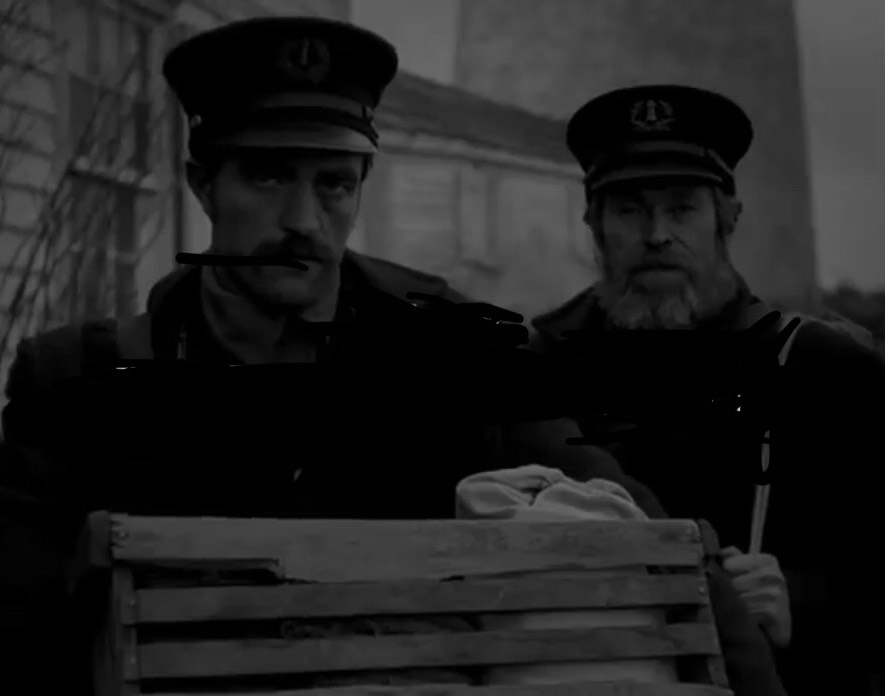From Vampire to Psychotic Lighthouse Keeper, Robert Pattinson’s Stars in His New Movie ‘The Lighthouse’
December 18, 2019
While black and white movies that are made in the 21st century may not be so popular anymore, it didn’t stop Robert Eggers from directing “The Lighthouse” in the contrasting tones. Set in 1890s New England, it follows two lighthouse keepers, Ephraim Wilson (Robert Pattinson) and Thomas Wake (Willem Dafoe), as they arrive on a mysterious, isolated island to do maintenance work for four weeks. Left alone, they slowly start to descend into madness as they realize that there is no escaping the island.
The plot can be broken up into two parts: before and after the storm. In the first hour of the film (before the storm), we see how there is some tension between the two lighthouse keepers. Ephriam, the new keeper or wickie, is filling the position that was held by the previous assistant who went insane, and it seems that as the movie progresses, the same fate befalls on Ephraim.
Thomas, the older keeper, forces Ephraim to do all the dirty work—mopping the floors, cleaning the kitchen, fishing for food, etc. Part of the reason for this is because Thomas wants to feel as though he has power over Ephriam. This power play is furthered as Thomas never actually lets Ephriam go up and control the light. Thomas wants to be the sole keeper of the light. The light itself is special, and Thomas even refers it to it as a “her” and better than any wife. After the four weeks pass, and because of the storm (which was real while filming and not made by a rain machine), no boat ever comes to pick both men up. Now the chaos really starts to happen. The acting that both men exhibit throughout the film is impressive, especially considering how disillusioned their characters have to be.
The setting of the plot may not have a lot of variety (all of the scenes are mostly located on the isolated island and lighthouse), but it certainly adds to the antiquated and disturbing mood. The set of “The Lighthouse” was located in Nova Scotia, and the lighthouse that encompasses the plot was designed by production designer Craig Lathrop and handbuilt from scratch.
Many of the items that are included in the set design, such as plates, candles, chairs, etc, were all made true to the era of the setting and were very realistic. Even though “The Lighthouse” is not necessarily fiction, the attention to detail that the director and set designers brought was very impressive and it made me feel as though I was experiencing that point in time.
Even more, the wardrobe was very authentic to the period of the setting. Linda Muir, the costume designer, had to include many details on the clothing that was not only authentic but would also translate well on the black and white screen. She was able to emulate lighthouse keepers’ clothing from the 1890s, even down to the number of buttons that were used on a rain jacket (https://www.awardsdaily.com/2019/10/30/interview-linda-muir-discusses-how-textures-helped-her-create-the-costumes-of-the-lighthouse/).
Overall, the ominous fog horn, black and white setting and old-fashioned movie ratio, make this film stand out from the mainstream films that many movie-goers enjoy. This film stands out so much that not only was it not being screened in my hometown cinema, but when I went to watch it there were only nine other people in the theater with me. From the gruesome ending to the confusion of knowing what’s real and what’s not, I felt that while “The Lighthouse” is categorized as a drama/thriller movie, it left me with a great sense of discomfort, and maybe confusion, rather than fear.
I enjoyed the film as it wasn’t like anything I’ve ever seen before. The line between reality and disillusionment is blurred throughout the film, and it left me with a lot of unanswered questions about the meaning of the plot.

